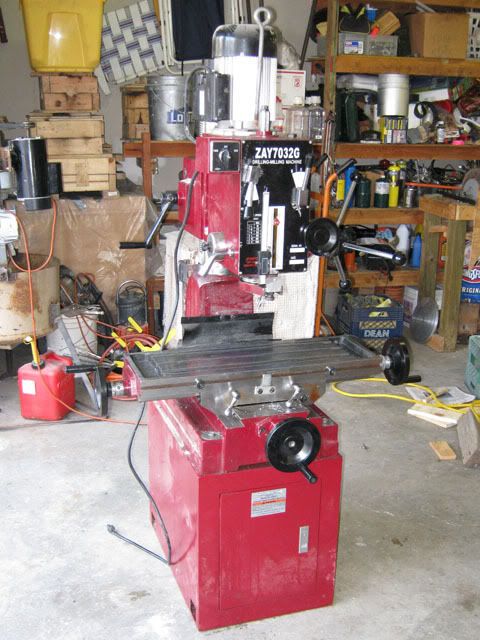vederstein
Must do dumb things....
- Joined
- Feb 26, 2011
- Messages
- 917
- Reaction score
- 744
Recently I received a PMR #4 1/4 hp steam engine kit as a gift. Not knowing how to build this thing, I asked if anyone knew of some build logs.
Nobody responded.
So I'm forging ahead. Since apparently there aren't any PMR #4 builds on the Internet (just finished engines), I'll document my build here.
Those that know this engine and it's brother, the #6CI, this is not a model engine. It's a full sized 1/4hp reproduction of an engine from about 120 years ago. So lets face it, you're not going to build this thing on a Sherline or SIEG mini-lathe.
You need some decent sized equipment. Luckily I have a large enough Chinese (Harbor Freight) mill-drill and a 78 year old 12" x 36" Sebastian lathe.

(This isn't mine, but mine looks just like it.)

In 2012 I built the PMR #6CI. This engine uses many of the same components. Unfortunately, with my relative inexperience, a casting issue, and bad decisions at the time, I has a running engine, but it leaked way too much to be of much use.
Perhaps I'll be more successful with this build.
More to come...
...Ved.
Nobody responded.
So I'm forging ahead. Since apparently there aren't any PMR #4 builds on the Internet (just finished engines), I'll document my build here.
Those that know this engine and it's brother, the #6CI, this is not a model engine. It's a full sized 1/4hp reproduction of an engine from about 120 years ago. So lets face it, you're not going to build this thing on a Sherline or SIEG mini-lathe.
You need some decent sized equipment. Luckily I have a large enough Chinese (Harbor Freight) mill-drill and a 78 year old 12" x 36" Sebastian lathe.

(This isn't mine, but mine looks just like it.)
In 2012 I built the PMR #6CI. This engine uses many of the same components. Unfortunately, with my relative inexperience, a casting issue, and bad decisions at the time, I has a running engine, but it leaked way too much to be of much use.
Perhaps I'll be more successful with this build.
More to come...
...Ved.































































